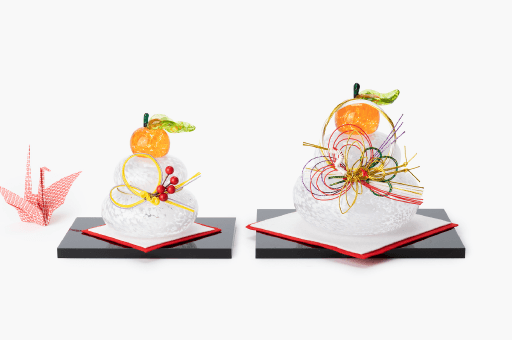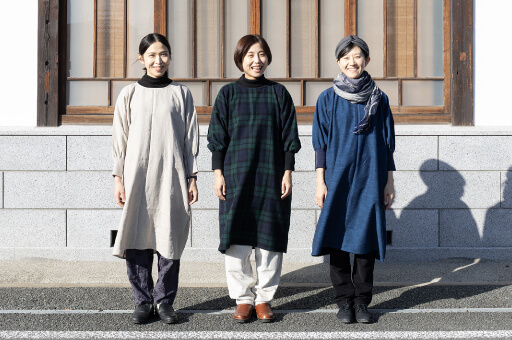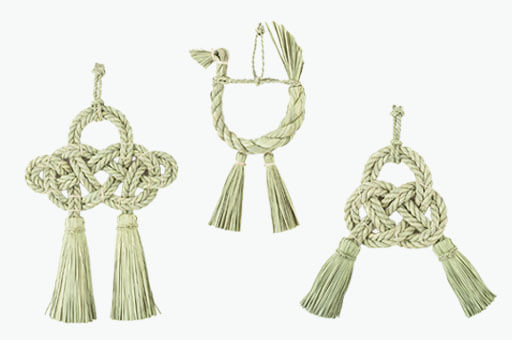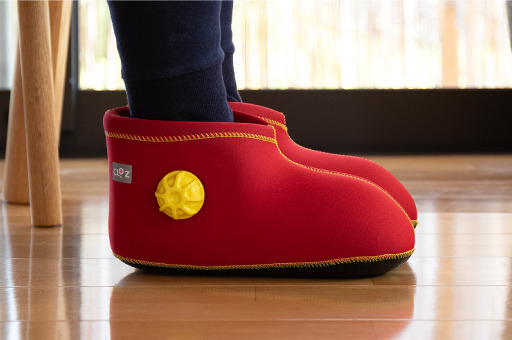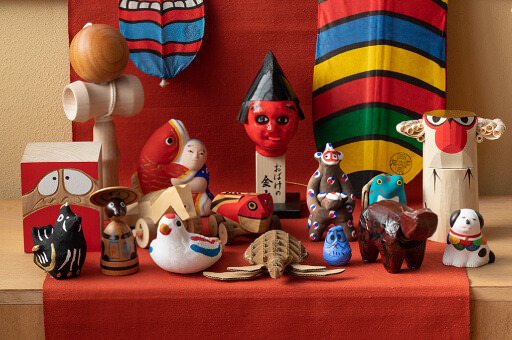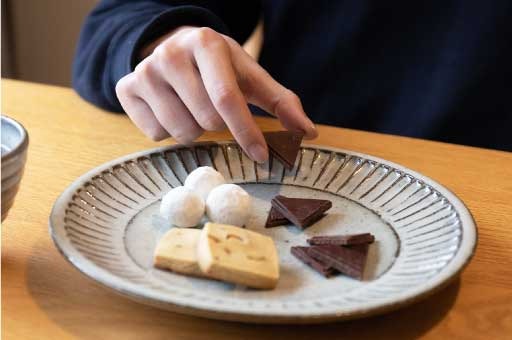【2000字コラム 渡邊令】Holland x Kyushu オランダ&九州 エキスパートミーティング」開催! How to keep crafts alive?
「生きている」ことの重要性。工芸も人も地域もサステイナブルになれる。
The importance of being “alive”: Crafts, people and communities can be sustainable
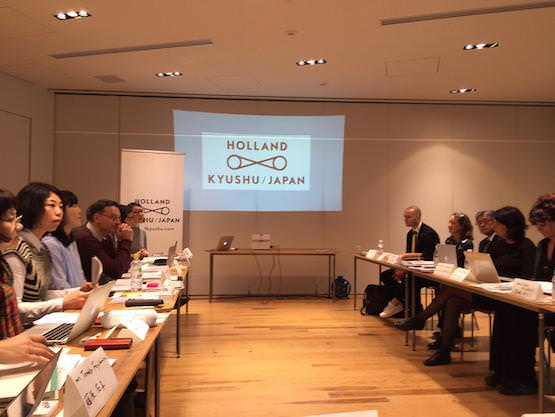
Holland x Kyushu エキスパートミーティングスタート!
「伝統工芸」について考える、オランダと九州の対話
先日、筑後にある隈研吾さん設計の九州芸文館にて、工芸とイノベーションをテーマにした「オランダ&九州 エキスパートミーティング」が開催されました。オランダと各国の文化交流を促進する機関、Dutch Culture(http://dutchculture.nl/en/about-dutchculture)とオランダ大使館が主催した国際会議で、うなぎの寝床は福岡でのパートナーとして、オーガナイズをお手伝いしました。日本からは有田、波佐見、福岡など各地から様々な分野の専門家が集結し、オランダからは、世界的にも名高いテキスタイルミュージアム(http://www.textielmuseum.nl/nl/)や、芸術アカデミー・芸術大学の先生、陶磁器のデザイナーの方など、オランダの工芸分野に関わる方々が8名ほど来日され、日本とオランダでのそれぞれの活動を紹介し合う、良い交流の機会になったと思います。前日にオランダからのゲストの皆さんを、八女の作り手のところに案内した際にもディスカッションになりましたが、工芸(クラフト)を取り巻く環境はやはり国によって全然違います。オランダの場合、工芸は時代の変化に影響されて、知識が失われていった時代もあったそうですが、近年再びサステイナビリティの考え方や手仕事の価値が再評価されて、作り手や技術が「再発掘」されていってるといいます。そのためか「伝統工芸」という考え方はなく、むしろ未来発展型の「技術」の一つとして捉えられているようで、デザインやテクノロジーとの融合も非常に柔軟です。逆に日本では、経済産業省による伝統的産業振興施策(いわゆる伝統的工芸品指定)と、文化庁による文化財施策(人間国宝などの無形文化財指定など)の両輪体制の中、工芸品と職人は「守るべき存在」として扱われてきました。そのお陰で大量生産・大量消費の時代の影響を受けながらも、何とか技術の伝承を続けることができたというプラスの側面と、様々な縛りによって、変化とイノベーションが起こりにくいというマイナスの側面があります。それは八女地域で伝統工芸品指定されている、仏壇・提灯・石灯籠などの産業を見ていても感じることです。
We have joined the “Holland-Kyushu Expert Meeting” was held this week to discuss about craft and innovation at Kyushu Geibunkan (designed by Kengo Kuma) in Yame. This event was held by Dutch Culture (http://dutchculture.nl/en/about-dutchculture) and the Dutch Embassy, and Unagi-no-Nedoko has had the chance to help the coordination in Yame as a partner. We had some wonderful guests from the Netherlands, such as the Texiel Museum, Art Universities, Craft Counsil, and porcelain designer (Cor Unum), and experts from different sectors in Kyushu and Japan and I believe it was great chance for everyone to learn about each other’s thoughts and work. There were some interesting discussions during the visits to some crafts makers in the area, as the situation surrounding the crafts industry is very different in each area and country. From what I’ve understood, crafts in the Netherlands has declined in the last half century and much of the knowledge has been lost, but recently as sustainability and hand-crafted work has been revalued, makers and their techniques have been “rediscovered”. As crafts were not a protected heritage to begin with, the craft network in the Netherlands has a flexible nature and is quite open and to new design and technology. In Japan, on the other hand, traditional crafts were something to be “protected”, and the Ministry of Economy, Trade and Industry (METI) issues the “traditional craft certificate” to 218 crafts all over Japan to support its preservation, while the Agency for Cultural Affairs certifies and protects intagible cultural heritage on people basis. This double support system has definitely helped Japanese traditional crafts to survive the mass production / mass consumption era, but at the same time, left the crafts to be preserved “frozen” and limited its change and innovation. This is something we can feel on a daily basis here in Yame as well, as traditional indsutries such as “butsudan” (Buddhist home altars), chochin (paper lanterns), and stone lanterns are suffering to breakthrough.
ただ継続するだけではない「生かす」技術とは?
作り手のところを巡った彼らから出た質問の中で、「日本では一体どうやって工芸を生かし続けているのか?」というものがありました。おそらく手仕事の工程が未だに多く、ちゃんと利益になっているのかという経済的な疑問でもあり、技術の継承者が少ない中で誰が主導して存続させていくのかという疑問でもあったと思います。ただこれは単に存続させるだけではなく、工芸を「生きた存在(ALIVE)」として捉え、生物のように活発に動き続けていくためにはどうしたら良いのか、という問いかけにも思いました。会議でも出ていましたが、何よりも利益を生む仕事として「作り続けられる」ということが必要になってきますし、魅力的な仕事であれば後継者も現れるかもしれないし、材料や道具などを作る職人も残っていくことができます。一番大切なのは主体となるスピリットの部分であって、どういう人がどういう背景でモノづくりをしているのかという軸のようなものがあれば、時代に合わせて柔軟に形を変えながら発展し、「生業(なりわい)」として取り組めるのだと思います。
One of the questions from the Dutch participants that made me think was this: “How are Japanese crafts kept alive?” Seeing the situation of craft makers in Japan where still much of the making process is done by hand, it was probably a question of profit-making, and also a question of trasmission of technique as some of the makers are lacking successors. But the word “alive” has triggered something in me, as it carries the connotation that crafts is not just something to be preserved but to be active and responsive. As it was discussed in the meeting, it’s important that craft makers can continue their jobs making enough profit, as the technique can only be passed down when there is the need. Some of the materials and tools are also on the verge of declining, but only with demand, they will be able to continue as well. And I think the most important of all is the core spirit of each craft maker, of who and what background they are working. If there is this backbone, they can always adapt their skills to new waves, and keep their work “alive”.
「九州」という枠組みの可能性と挑戦
今回、もう一つ印象に残ったのが、「オランダ&九州」というコンセプト。国レベルでいえば「オランダ&日本」、歴史的に見れば「オランダ&長崎」の方が自然であるようにも思えますが、あえて九州/Kyushuがピックアップされたことに意味があると思いました。というのも、実際に九州の人には「九州人」という意識はありません。九州は大きな島でもあるわけですが「Kyushu Island」という言い方も、あまりしません。そもそも海外では「九州/Kyushu」の存在すらほとんど知られてはいません。それなのに何故・・・ということで「オランダ&九州」のコンセプトを決めた、Dutch Culture代表のCeesさんに聞いてみると、2年前に初めて来日した場所が九州で、その後東京で経済界のトップたちと会食をした際に、九州から来たと言うと大きな反応があったそうです。付加価値となる何かが九州にはあるのだと感じ、九州という枠で取り組むことを決めたといいます。これは推測でしか無いですが、その経済界の方々にとって、日本人にとっては少し奥地感のある九州へ、オランダ人が仕事で(しかもクリエイティブな目的を持って)向かったということが、新鮮に感じられたのでは無いかと思うのです。それは逆に言えば、まだまだ九州が未知数・未発掘状態であることの表れでもありますし、新鮮だな、可能性があるな、と思われているうちはいいですが、その期待に応えて結果を残していかなければ、ただのコンセプトで終わってしまいます。九州には、外の人間が非日常を楽しみに来る「観光」以上に、地元での生活と生業がきちんと残っており、九州という枠で見た時に、その多様性によって、地産地消ができるというサステイナブルな環境が、一つの魅力だと思っています。工芸でも生活でも、生きた状態(ALIVE)であることが何よりも人を惹きつけ、仕事にも繋がっていくのではと、久々に外の空気が入ってきて考える良いきっかけになりました。渡邊
Another thing that has inspired me was the concept “Holland and Kyushu”. It seems more natural on the national level to make it “Holland and Japan” or on the historical context “Holland and Nagasaki” but I thought it was quite interesting “Kyushu” was picked up as a whole. In fact, people of Kyushu don’t seem to have an unified identity of Kyushu, and even though Kyushu is quite a big island (around the same size as the Netherlands), no one really calls it “Kyushu island”. And most people from outside of Japan don’t even know or never heard of Kyushu. Trying to discover why, I have asked Mr. Cees de Graaff (director of Dutch Culture) who had decided to focus on Kyushu, and he has told me how his first visit to Japan two years ago was to Kyushu, and when he had a business dinner with some top Business leaders in Tokyo later on, there was a positive reaction from them that he had been in Kyushu first. He felt that there was some added value that Kyushu held, and decided to work with Kyushu for this creative project between Dutch and Japanese artists and craftsmen. I suppose that the idea that Kyushu, which is considered to be a back-country of Japan, connecting with something so interenational has seemed somewhat refresing. But that also means that Kyushu is still so unknown and undiscovered, and it’s good that poeple feel that there is freshness and excitement, but there obviously needs to be results and accomplishment to proceed to the next step. I personally think that Kyushu can offer so much more than the “outside-of-everyday-life tourism”: As there is still local life and work that is active and alive, and with the vast diversity of people, crafts, food, and other occupations, Kyushu is fully self-sustainable. The fresh air from the Netherlands has helped me rethink about “liveliness” of crafts and places, and how it is probably the best force that attracts others.
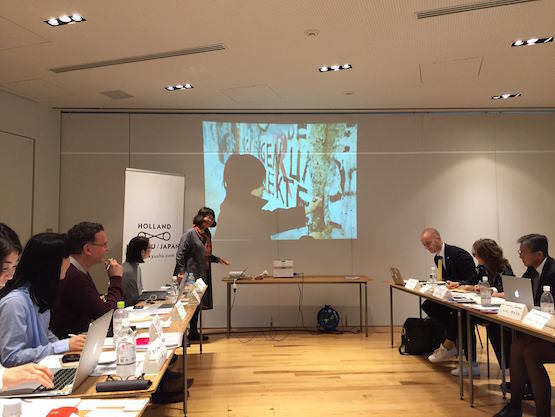
1989年にベルリンの壁を壊している、九大の池田先生
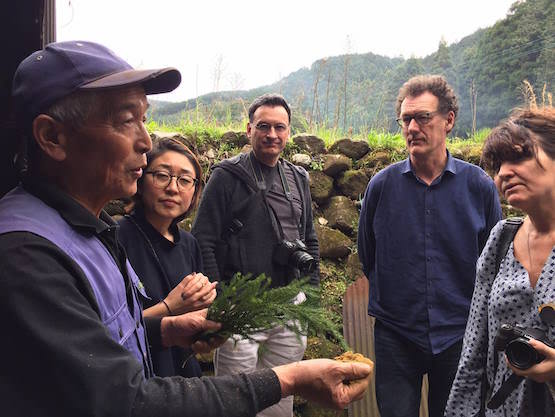
お線香の原料となる杉粉。日本に5件しか残っていない、
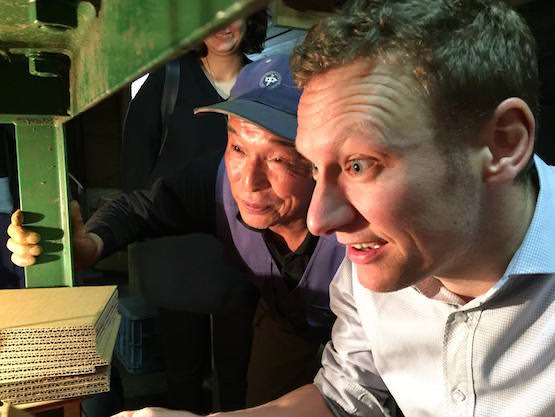
写ってないけど、お線香がにょろ〜って出てくるのを見て
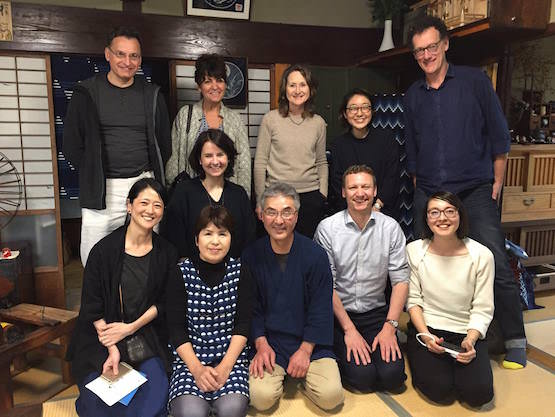
伝統的な藍染手織りで久留米絣を作っている山村健さんの
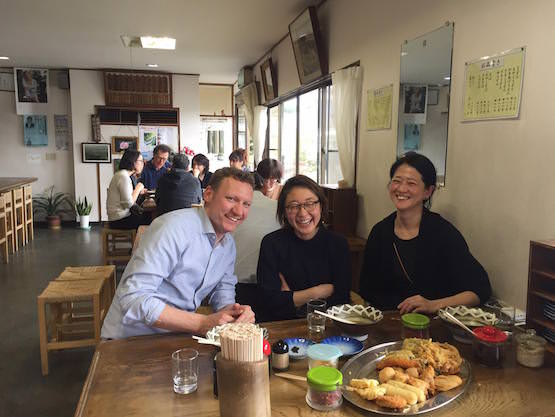
今回一緒にオーガナイズさせていただいた長崎Listの
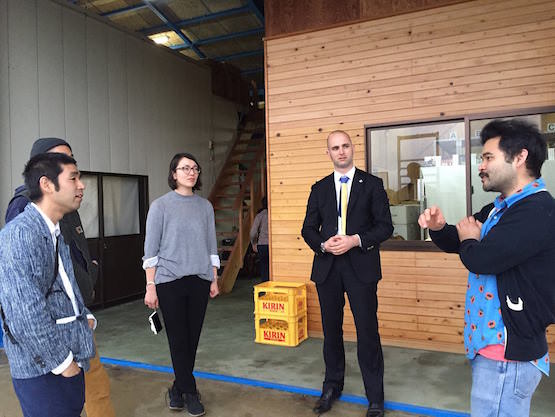
長崎波佐見からはマルヒロの馬場さんも来てくださいまし
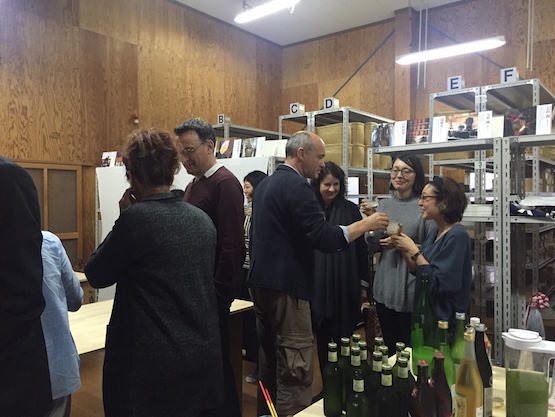 会議の後は、うなぎの倉庫でカクテルパーティ。地酒の繁
会議の後は、うなぎの倉庫でカクテルパーティ。地酒の繁
その他のお知らせ
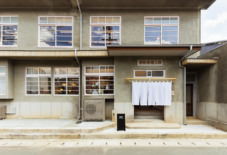
【愛媛・大洲店】2026年1月、2月の運営について
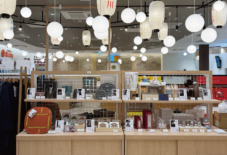
九州自動車道 広川SA(上り線)で地域の人・文化・伝統とコネクト!
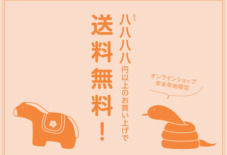
【オンラインショップ限定】「8,888円」以上のお買い物で“送料無料”に!
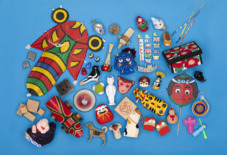
【縁起物いろいろ】2026年、福がふらりとあらわれる一年に

【はんてん、どれにする?】 小さいのから大きいのまで、サイズ展開編
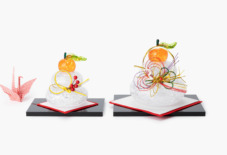
【新商品】マルティグラス 鏡餅
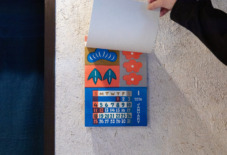
【年末年始の必需品】新しい年を迎えるために





